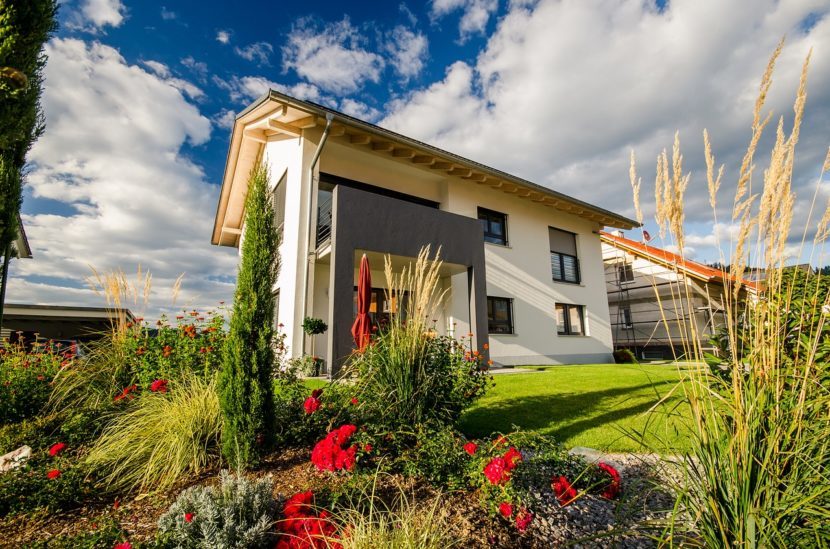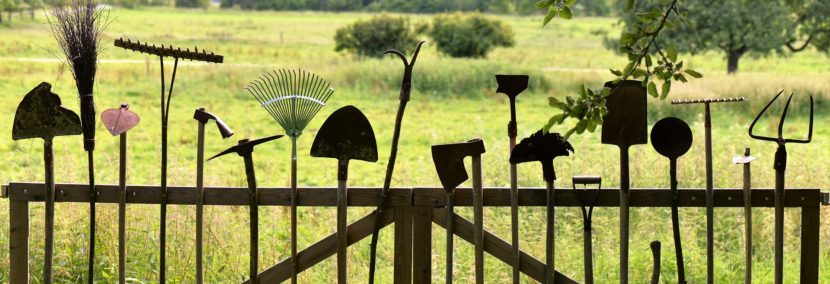6 Tips to Create a Low Maintenance Garden

I noticed an ongoing trend in gardening. People want low maintenance gardens. Don’t mistake low maintenance for no maintenance.
I doubt that people actually want a “low maintenance” garden. I think what they actually want is a nice garden that doesn’t require a lot of time to maintain. I am going to share the best tips for gardening efficiently AND effectively.
Why you can trust me
There are two reasons that you can trust the information I’m about to share.
First, I own a landscape maintenance business. I know the technical skills for creating and maintaining landscapes. The tips that I am going to share reflect how professionals care for a property. In the landscape maintenance industry, it is vital to complete jobs properly in an efficient amount of time.
Second, I am a business enthusiast. What does this have to do with low maintenance gardening? Business is about leveraging time and maximizing output. I am going to give you landscape maintenance tips that will allow you to run your garden like a business.
Now, let’s talk about how you can get started maintaining your landscape in less time.
1. Tools

Get the proper tools! Would you ever try to mow your lawn with a pair of scissors? I didn’t think so. Invest in the proper tools for gardening so that you can maximize your effort.
Additionally, it is important to maintain your tools. The old saying, “if a lumberjack is given 4 hours to fell a tree, he will spend the first 3 sharpening his ax,” is rooted in truth. Using dull blades and rusty equipment is not only inefficient, they can also damage plants and cause injury!
Some good tools to have for gardening include –
Hand pruners

Loppers

Soil knife

These are the three main tools that my company uses when maintaining flower beds.
Remember tools are an investment. You want to have more time, so paying $10 more for a pair of pruners that will last longer and work better is well worth it.
Survey your landscape and decide what tools you need to maintain your property. Each home will present a unique set of challenges, so investing in the proper equipment will lead to time-saving in the future.
The tools mentioned earlier are a good starting point for almost any homeowner.
2. Batching
Just as businesses batch their processes, you too should batch your outdoor maintenance activities.
Examining your gardens for weeds every night is not efficient. Instead, create a schedule. Pull weeds every other Tuesday after work. This way you can let a few weeds accumulate, but the schedule is frequent enough that the task can still be completed quickly.
Another good example is watering. Do not water the lawn in the morning, then water the front flower beds at lunchtime and then water the vegetable garden at night. Just do it all at once!
You can adjust the frequency of maintenance as needed for your property. If you realize that more maintenance is needed, move to the next level of frequency.
For example, if weeding every other week is not enough, weed every 5 days then. In contrast, if you are performing a task too often, reduce the frequency.
3. Automation
This is one of the ultimate resources for a low maintenance garden. After the initial setup, you can effectively remove yourself from the process.
Watering plants is a good example. Install a drip irrigation system to automatically water flowers and vegetables. With this method, you can set it and forget it.
If you are very serious about automation, fertilizer and herbicides can be run through irrigation systems. Just be careful and always read the label before doing so.
4. Delegation
This tactic will not reduce the maintenance needs around your landscape, but it will reduce the amount of time YOU have to spend maintaining it.
Outsourcing tasks such as pruning, lawn mowing, and mulching may be to your benefit. If the project is too long for you to do, it is in your best interest to call in outside help.
Landscape contractors get their materials at a discount. They also have the proper tools to handle large jobs that are out of the scope for a typical homeowner.
Remember, though, never delegate something that can be automated.
5. Elimination
Chances are this option never crossed your mind.
Are you tired of weeding the vegetable garden that you never even use? Do you wish you had an outdoor dining area?
Here is your chance to kill 2 birds with one stone. Remove the vegetable garden and install the dining area in its place.
You have eliminated one problem, weeding the vegetable garden, by solving another issue.
Look around your landscape and see what features you can take away or install to achieve a low maintenance garden.
6. Knowledge

Paradoxically, this is the last and probably most useful tip for reducing time spent in the garden.
Learning about grass morphology, for example, will teach you that mowing at a higher height actually reduces the frequency of lawn mowing.
There are many other knowledge-based tips that I plan on sharing with you in the future. Some will involve learning technical skills. Others will involve learning about products.
In conclusion
I hope those 6 tips got some ideas flowing. I will be going into greater detail about each topic in future posts, as each one could be turned into multiple posts.
Low maintenance gardening does not mean having a concrete pad. Utilize tools, technology and know how to maintain your landscape in a fraction of the time.
Thanks for reading and come back weekly for more information about each of the topics discussed!


Recent Comments